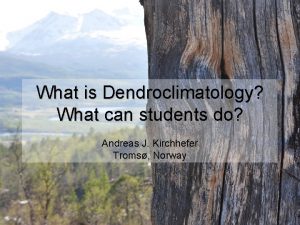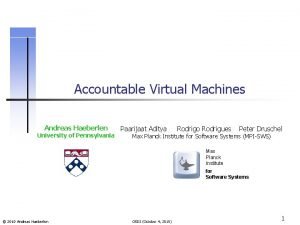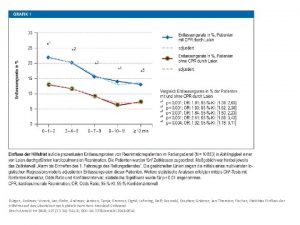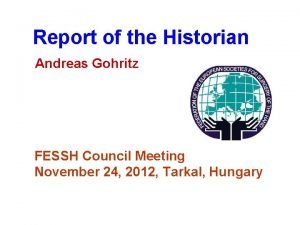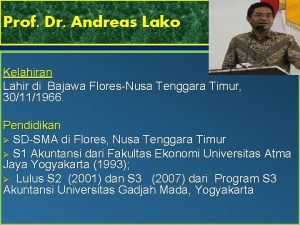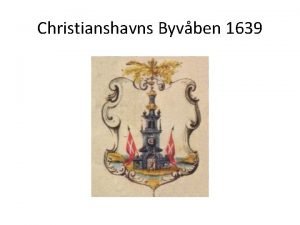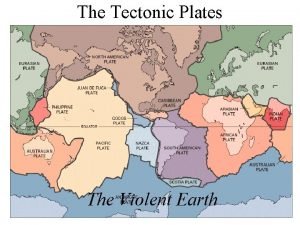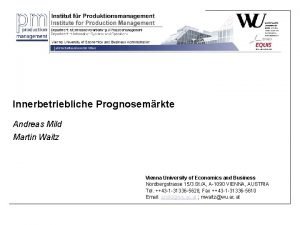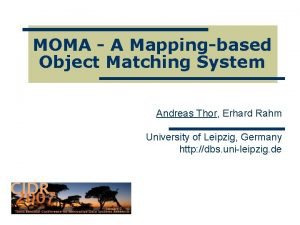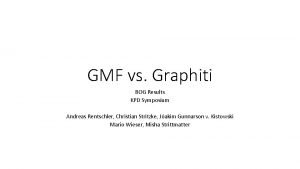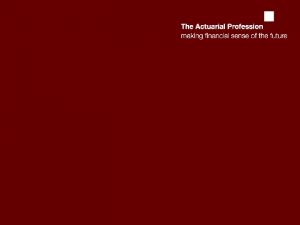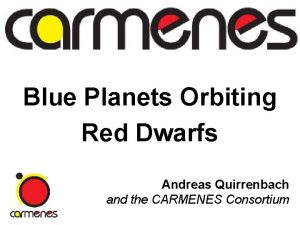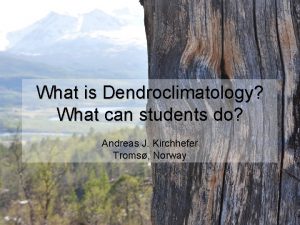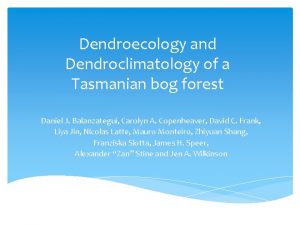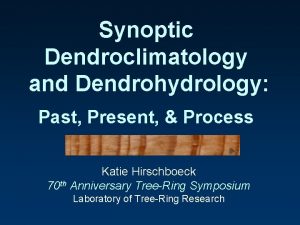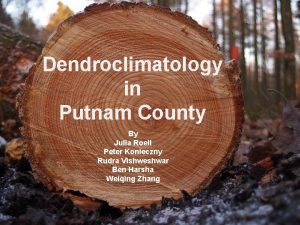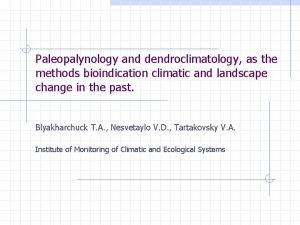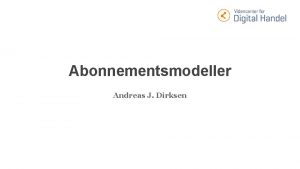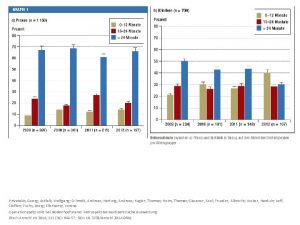What is Dendroclimatology What can students do Andreas








































- Slides: 40

What is Dendroclimatology? What can students do? Andreas J. Kirchhefer Tromsø, Norway

What is dendroclimatology? ”The tree as a weather station” Aims: • Understanding the trees responses to climate • Reconstructing climate • Understanding changes in climate and growth • Simple basic methodology, but increasingly sophisticated methods

Principals and concepts of dendrochronology • Prerequisit: Annual rings (one ring per year) • Limiting factors & ecological amplitude • Crossdating • • • Aggregate tree growth model Standardisation Autocorrelation Replication Site selection Uniformitarianism

Tree rings • Seasonal climate with one dormant season: – Too cold – Too dry (Fritts 1976, redrawn from Krüger & Trappe 1967) • Challenging: mediterranean climates • Extremely difficult: tropical climate

Wood structure: conifers (Schweingruber 1989)

Wood structure: conifers under the microscope Annual ring Direction of growth Earlywood Latewood Ring boundary 1 mm Resin duct Hazel growth Slight density fluctuation within latewood

Wood structure: conifers (Schweingruber 1996, from Huber 1961)

Wood structure - Think three-dimensional ! (Stokes & Smiley 1968) Auxin model of tree growth Þ Partial missing rings (Schweingruber 1996, ref. Nogler 1981)

Limiting factors - Liebig’s Law of the Minimum - (Stokes & Smiley 1968) Droughts (Speer 2010)

Cross-dating (Stokes & Smiley 1968)

Ø Dendrochronology Dating of wood by means of tree-rings (Schweingruber 1989)

80 yrs Living pines (several generations) 300 yrs >680 yrs

Dead pines Snag: AD 1291 -1461 Down wood: AD 984 -1180

Composing a chronology: Life spans of pines in Forfjorddalen, North Norway Measured tree-ring series n = 212 trees

Long chronologies from subfossil pine logs (Lake Brennskogtjern, Dividalen)

Aggregate model of tree growth Ring width is a function of: • The age related growth trend • Climate • Endogeneous disturbance (within stand) • Exogeneous disturbance (from outside) • error

Standardisation – removing the age trend raw values 2 1 0 STANDARD ring width (mm) single core 1 0 RESIDUAL tree-ring index 2 2 1 0 1800 1900 year

Autocorrelation (lag effect) raw values 2 1 0 STANDARD ring width (mm) single core 1 0 RESIDUAL tree-ring index 2 2 1 0 1800 1900 year (Fritts 1976)

multiple cores 1800 chronology raw values single core 2 1 0 STANDARD ring width (mm) Replication 1 0 RESIDUAL tree-ring index 2 2 1 0 1900 year 1800 1900 2000

Site selection (Figure: Stokes & Smiley 1968)

Uniformitarianism ”The present is the key to the past” (Kirchhefer 2005)

Dendroclimatology with examples from North Norway • • • Robust chronology Climate data Climate-response analysis Calibration / verification Reconstruction

North Cape Tromsø Chronologies of Scots pine (Pinus sylvestris) n e t fo Lo Narvik Rovaniemi

Standard chronologies from North Norway 1850 -1992 (Kirchhefer 1999, updated)

Regional means of chronologies 1850 -1992: changes in space and time coast inland (Kirchhefer 1999, updated)

General growth response From standard chronologies From residual chronologies Correlations between tree rings (after removing age-trends) and climate data, one month at a time. Confidence intervals indicated (thin lines, bars). Multiple regression between tree-rings (after removing autocorrelation) and monthly climate data (interdependence between climate data removed by PCA) => very clear July signal. (Kirchhefer 1999, updated)

Tree-growth from July temperatures 1875 -1992 (1895 -1992), standard chronologies Mean growth (grey) Mean growth estimated from temperatures (black) Improving the estimate by taking account of regional growth variability Further improving the estimate by taking account of autocorrelation (lag effects) (Kirchhefer 1999, updated)

correlation coeff. r Is the climate-growth relationship stable in time? Last year of moving 30 -yr windows Temperature Precipitation July temperature is the principal growth limiting factor throughout the study period (positive correlation). In the first, warm part of the 20 th century, however, pine growth was enhanced also by high August temperatures and apparently hampered by high precipitation in July and August. After 1960, June temperatures became more important. (Kirchhefer, unpublished)

Multiproxy dendroclimatology with examples from North Norway • • • Ring width Early- and latewood width Latewood density Stabile isotopes Cell morphology Other high-resolution climate archives: – Ice cores, speleotems, sediments – Corals, molluscs

Growth responses: temp prec cloud - temperature (left) - precipitation (mid) - cloud cover (right) - Ring width (rw) - Maximum latewood density (MXD) - Stable carbon ( 13 C) Regression coefficients for the months from February through August Tromsø Andenes Forfjorddalen Svolvær/Skrova Glomfjord (Kirchhefer et al. , preliminary data / unpublished; for RW see Kirchhefer 2001; for 13 C see Young et al. 2011)

Visual comparison of tree-ring data and estimated climate: Do high- (year-to-year) and low-frequency (decadal to secular) variations fit? (Kirchhefer et al. , preliminary data / unpublished; for RW see Kirchhefer 2001; for 13 C see Young et al. 2011)

Statistics: Split-period verification (Calibrate on one part of the data series, verify results on the remaining data) Target <= predictor (model) JA temp <= RW (t-1, t, t+1) JA temp <= MXD (t) JA temp <= 13 C (t, t+1, t+2) JA cloudiness <= 13 C (t, t+1) Calibration n r R 2 adj Verification RE CE 1890 -2005 1890 -1947 1948 -2005 116 58 58 . 58. 73. 57 . 319. 502. 286 1948 -2005 1890 -1947 1890 -2002 1890 -1947 1948 -2002 113 58 55 . 65. 73. 63 . 401. 502. 363 1948 -2002 1890 -1947 . 171. 325 . 156. 314 1890 -2005 1890 -1947 1948 -2005 116 58 58 . 76. 78. 73 . 567. 594. 525 1948 -2005 1890 -1947 . 541. 606 . 524. 593 1890 -2003 1890 -1947 1948 -2003 114 58 56 . 74. 69. 82 . 540. 441. 654 1948 -2003 1890 -1947 . 624. 432 . 615. 420 1890 -2001 1890 -1947 1948 -2001 112 58 54 . 69. 73. 66 . 460. 515. 412 1948 -2001 1890 -1947 . 209. 415 . 207. 415 -. 095 -. 136. 177. 151 RE: Reduction of Error, CE: Coefficient of Efficiency (Kirchhefer et al. , preliminary data / unpublished; for RW see Kirchhefer 2001; for 13 C see Young et al. 2011)

Summer climate from tree-rings recent developments: a) low-frequency variability preserved, b) new climate information (sunshine) Little Ice Age Medieval Warm Period (Kirchhefer et al. , preliminary data / unpublished; for RW see Kirchhefer 2001; for 13 C see Young et al. 2011)

Synoptic dendroclimatology • Which area do my tree-ring data represent? Spatial correlation between reconstructed temperatures from Forfjorddalen and observed temperatures • Large-scale networks – Atmospheric circulation – Teleconnections (Kirchhefer et al. , preliminary data / unpublished; for RW see Kirchhefer 2001; for 13 C see Young et al. 2011)

What can students do? - basics - • Where do we find tree-rings? How do they look? • Tree: species, circumference, height, state? • Site: geology, slope aspect, soil moisture, vegetation type - What influences tree growth? • Preparation: http: //web. utk. edu/~grissino/, http: //www. rmtrr. org/ • Tree-ring counts – On discs or cores – How old is the tree (vs. DBH & height, stand structure)?

What can students do? - basics (2) - • Tree-ring patterns on discs – From pith to bark – Concentric? – Growth discontinuities? • Young conifers branch whirl count & height increment vs. TR

What can students do? - ring widths - • Single-year analysis: – skeleton plotting • exteme rings, abrupt changes • particular characteristics: frost rings, resin ducts – Cross-dating (pointer years) – Comparison with climate (Stokes & Smiley 1968)

What can students do? - ring widths (2) - • Ring-width series: – Measuring: • measuring scale, • scanning, • digital photography – – Cross-dating and chronology Dealing with age trends Comparison with climate Reconstruction excercise?

What can students do? - dating excercises - Wooden house (Tråsdahl, Målselv) Wooden barn (Løvhaug, Målselv) Trees from the treeline (Tauskjerringa, Målselv) • Stumps? • Recently died trees? • Buildings? (Kirchhefer 2000, 2009 ab)

References Fritts, H. C. 1976: Tree Rings and Climate. New York: Academic Press. 567 p. (Re-print 2001: Caldwell, New Jersey: Blackburn Press. ) Huber, B. 1961: Grundzüge der Pflanzenanatomie: Versuch einer zeitgemässen Neudarstellung; mit 199 Abbildungen. Springer. 243 p. Kirchhefer, A. J. 1999: Pine growth and climate AD 1800 -1992 along a transect across the Scandes at 69°N (manuscript). In: Dendroclimatology on Scots pine (Pinus sylvestris L. ) in northern Norway. Ph. D thesis, Faculty of Science, University of Tromsø, Norway, Tromsø, 25 p. http: //www. ub. uit. no/munin/handle/10037/2412. Kirchhefer, A. J. 2000. The influence of slope aspect on tree-ring growth of Pinus sylvestris L. in northern Norway and its implications for climate reconstruction. Dendrochronologia 18, 27 -40. Kirchhefer, A. J. 2001. Reconstruction of summer temperature from tree-rings of Scots pine (Pinus sylvestris L. ) in coastal northern Norway. The Holocene 11, 41 -52. Kirchhefer, A. J. 2005: A discontinuous tree-ring record AD 320 -1994 from Dividalen, Norway: inferences on climate and treeline history. In Broll, G. and Keplin, B. , editors, Mountain and Northern Ecosystems - Studies in Treeline Ecology, Berlin: Springer, 219 -235. Kirchhefer, A. J. 2009 a: Dendrokronologisk analyse av tømmer av fjøset på Løvhaug, Rundhaug, Målselv komune, Tromsø: Dendroøkologen A. J. Kirchhefer, 19 p. Unpublished dating report. Kirchhefer, A. J. 2009 b: Dendrokronologisk datering av Tråsdahl gård (Gammelgården), Rundhaug, Målselv kommune. Tromsø: Dendroøkologen A. J. Kirchhefer, 11 p. Unpublished dating report. Krueger, K. W. and Trappe, J. M. 1967. Food reserves and seasonal growth of Douglas-fir seedlings. Forest Science 13, 192 -202. http: //www. fs. fed. us/pnw/pubs/journals/pnw_1967_krueger 001. pdf. Nogler, P. 1981. Auskeilende und fehlende Jahrringe in absterbenden Tannen (Abies alba Mill. ). Allgemeine Forst Zeitschrift 28, 709 -711. Schweingruber, F. H. 1987: Tree Rings: Basics and Applications of Dendrochronology. Dordrecht: Kluwer. 276 p. Schweingruber, F. H. 1996: Tree Rings and Environment. Dendroecology. Birmensdorf, Swiss Federal Institute for Forest, Snow and Landscape Research: Berne, Haupt. 609 p. Speer, J. H. 2010: Fundamentals of tree-ring research. University of Arizona Press. Stokes, M. A. and Smiley, T. L. 1968: An Introduction to Tree-Ring Dating. Chicago: University of Chicago Press. 73 p. (Reprint: 1996: University of Arizona Press. ) Young, G. , Mc. Carroll, D. , Loader, N. , Gagen, M. , Kirchhefer, A. and Demmler, J. (online early 2011). Changes in atmospheric circulation and the Arctic Oscillation preserved within a millennial length reconstruction of summer cloud cover from northern Fennoscandia. Climate Dynamics, 1 -13. http: //dx. doi. org/10. 1007/s 00382 -011 -1246 -3 If not otherwise stated: All figures and photos by A. J. Kirchhefer
 What is dendroclimatology
What is dendroclimatology Rizal was involved in student demonstration in madrid
Rizal was involved in student demonstration in madrid Dwi andreas santosa
Dwi andreas santosa Andreas haeberlen
Andreas haeberlen Objectstudio
Objectstudio Andreas tsantilas
Andreas tsantilas Andreas höffle
Andreas höffle Andreas kuznik
Andreas kuznik Andreas jantzen
Andreas jantzen Andreas polze
Andreas polze Mag. andreas ladner parte
Mag. andreas ladner parte Andreas morsch
Andreas morsch Andreas grabner
Andreas grabner Andreas gohritz
Andreas gohritz Andreas blohm
Andreas blohm Andreas lako
Andreas lako Kindergarten weebly
Kindergarten weebly Slwzzbgh7cw -site:youtube.com
Slwzzbgh7cw -site:youtube.com Arch
Arch Dr andreas otto
Dr andreas otto Andreas illi
Andreas illi Andreas prodromou helios 522
Andreas prodromou helios 522 Andreas panias
Andreas panias Andreas glahn wernlund
Andreas glahn wernlund Leischker
Leischker San andreas fault
San andreas fault Lieb mich oder hass mich
Lieb mich oder hass mich Andreas reisenegger
Andreas reisenegger Andreas rüegge
Andreas rüegge Andreas mild
Andreas mild Andreas thor
Andreas thor Yudas lapis petrus
Yudas lapis petrus Project copenheimer
Project copenheimer Jon andreas støvneng
Jon andreas støvneng Andreas tsanakas
Andreas tsanakas Andreas kuhnert
Andreas kuhnert Andreas asperl
Andreas asperl Andreas solymos
Andreas solymos Andreas gursky biography
Andreas gursky biography Andreas martin und drafi deutscher
Andreas martin und drafi deutscher Andreas quirrenbach
Andreas quirrenbach
